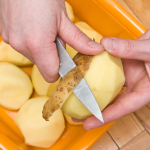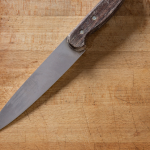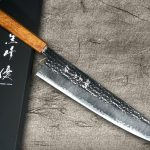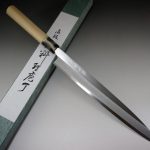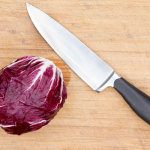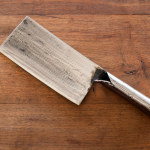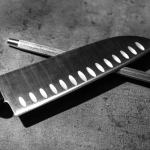Japanese cuisine is among the world’s most complicated food, the only which requires the exquisite knife-work and all the techniques essential to craft culinary delicacies like no other could. Japanese delicacies like those seen in specialty restaurants or the so-called Omakase restaurants, are often served in Zen-styled plates, where the fresh, fine selection of ingredients are placed elegantly to showcase the authentic, Japanese traditions expressed through culinary art. As the Japanese way of serving food involves the beautiful, delicate methods requiring patience, understanding, and a strong dedication to portray, diners and gourmets are always surprised when it comes to the presentation of these delicious, mouth-watering sushi and sashimi dishes served in Omakase restaurants. Head chefs and professional cooks who expertise in the crafting of sashimi and sushi dishes will definitely know the importance of Japanese knives and what they can do to help during food preparation processes involving the traditional skills and techniques passed on from generations to generations.
A Japanese knife is known to cut through a vast variety of ingredients and are forged out of extremely hard steels (with HRC of over 60) to cut,
chop, and slice through dense ingredients like bones or fillet fresh, caught-from-sea fish and seafood. Japanese food chefs care for their blades dearly – cleaning all knives right after use and making sure they are all wiped dry, kept in a dry place free from extreme moisture and heat. As Japanese knives are forged with the passion to exert all the Japanese techniques into each stroke and line cuts, many Japanese knife brands value steel quality and blade design over the popularity or fame it receives. However, these special knives are cutleries that require a lot of attention and care. If a Japanese knife is purchased but not properly cared of, it can lose its identity and some of the best capabilities.
Caring for Japanese Knives
In general, Japanese knives are extremely sharp. Its blade body is narrow and thin, making it a prey to force exertion and unwanted outside damage. Easy to bend and be in a false form after several uses, a Japanese knife needs to maintain its balance and high performance through the recommended use of wooden end grain boards (Hinoki or Hiba wood) and thorough caring methods. It is best to use mild detergent and soft sponge to wash Japanese knives and keep them dry after cleansing. Storing Japanese knives in a storage box where blades are put vertically with knife heads down into knife channels can destroy the blades and even worse, make the precious knives bend. With this, it is best to store Japanese knives in dry and cool place but not where they could alter or change in shape or form. As soon as the blade shows any sign of brittleness or becomes visibly fragile, it is highly recommended to sharpen the knife as soon as possible to keep it in the best state.
Preventing Rust
Although Japanese knives are forged with the idealistic belief that ‘rust resistance’ and ‘durability’ comes together and are two essential components that make people fall in love with Japanese blades, rust can form easily on the blade bodies without the proper care and maintenance. It is best to not soak the knife in water and mild detergent for long periods of time. Avoiding contact with other steels can also help prevent unwanted rust from forming on the blades. Thus, the best method is to use a knife maintenance oil which can be applied onto a clean blade to prevent rust from forming.


